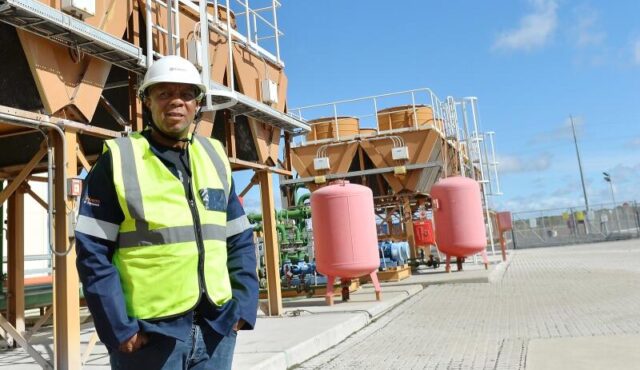Minister of Electricity Dr Kgosientsho Ramokgopa has warned that the delays being experienced in returning the 920MW Unit 1 of Koeberg Nuclear Power Station to the national grid poses a significant risk that could undermine the progress being made in implementing the Energy Action Plan.
MINISTER of Electricity Dr Kgosientsho Ramokgopa has warned that the delays being experienced in returning the 920MW Unit 1 of Koeberg Nuclear Power Station to the national grid posed a significant risk that could undermine the progress being made in implementing the Energy Action Plan.
In December 2022, Eskom belatedly took off-line Koeberg Unit 1 for at least six months to replace three steam generators in a bid to extend the life of the power station for an additional 20 years at an estimated cost of R20 billion.
However, the power utility has pushed the deadline for returning Unit 1 to the grid twice, moving it by 45 days from the scheduled July 23, due to numerous reasons, among them resource utilisation, safety incidents, unanticipated physical interferences, the delays in obtaining visas by foreign workers and crane failures.
There will be a six-week mandatory break for employees before beginning the same operation on Unit 2. Its outage is scheduled for November, taking Eskom dangerously close to the July 2024 deadline when Koeberg’s licence expires.
Ramokgopa said the delays at Koeberg were giving him sleepless nights because they had the potential of undermining the successes being scored in the energy plan.
“Koeberg Unit 1 is still out, and I think the team there has not covered themselves in glory in that it’s a significant outage slip and they keep on postponing the date of return of Unit 1. They have moved it twice now, so now we are entering that unit coming either late August or early September,” Ramokgopa said.
“That’s why I will be going to Koeberg, just to understand first what the issues are. It’s a significant amount of megawatts of 920MW, just shy of 1,000MW, to reduce one stage of load shedding.
“The biggest risk there is the overlap of this unit coming back later than scheduled, and for us to take out Unit 2. Remember that Unit 2 must go out. So if that overlap happens, it means that essentially you are losing 920MW.
“If we return it on time, the system gets the benefit of 920MW, but I think about a month later, you must take out Unit 2, so the net is zero. So you will not see it and it will not make any significant improvement to the grid in additional megawatt terms.
“But the biggest risk is the overlap in the courage slips and getting to a period where we will also have to take out Unit 2, then the net losses to the grid is 920MW. It’s just going to undermine all the efforts that we have been making.”
Nonetheless, Ramokgopa said the Energy Action Plan has begun to have a significant improvement on the country’s electricity supply challenges, exactly a year after President Cyril Ramaphosa announced it.
Ramokgopa said they could confidently say the plan was bearing fruit for the country’s generation capacity due to the government and private sector’s decisive interventions.
“Our focus is on the generation side, but we are working very hard with businesses and households on the demand side.
“But the sustainability and resilience of the energy ecosystem in the country is on the generation side, the installed unit and the ability to bring all-stream new-generation capacity, supported by transmission, that’s going to help us achieve energy sovereignty.”
He said Eskom’s generation fleet had improved, with the energy availability factor ramping up from 48% a few weeks ago to more than 60%.
Ramokgopa said that had enabled less severe load shedding over winter due to a reduction in unplanned losses which averaged less than 15,000MW compared with more than 18,000MW.
“The general outlook on load shedding and electricity generation is looking positive,” he said.
“We have been able to maintain the trend line. We are approximating that 60% energy availability factor. In megawatt terms, you can see the running average for the week is about 28,272MW.”
Ramokgopa said planned maintenance had been reduced to approximately 2,500MW while generation available from wind power has increased due to weather coastal in the coastal regions.
“As a result of improved generation capacity now, we have an additional space for us to do a good planned maintenance,” Ramokgopa added.
– BUSINESS REPORT








